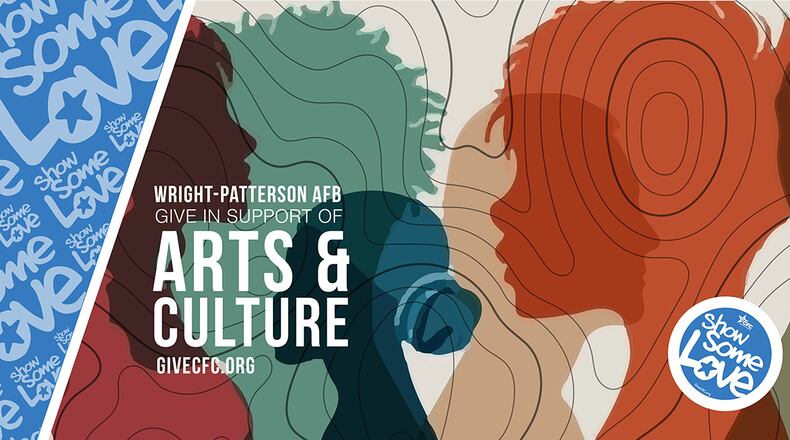This week’s cause: Arts & Culture
Arts and cultural organizations were immediately affected by the COVID-19 pandemic, said the development manager of a regional funding, advocacy and service organization for the arts.
“Arts and cultural organizations thrive on large group gatherings and that shared experience -- but we quickly realized that to keep everyone safe, it was important to close our doors and see where the situation led,” he said.
“That’s meant a lot of lost earned income. So many organizations rely on those ticket sales and special events to pay for operations, the cost of people’s salaries and a lot of really exciting programming. Without those dollars, it’s been rough for organizations to be sustainable.”
Months of behind-the-scenes preparations lead up to performances, events and exhibitions, he noted, and now the people who do that work are not getting paid.
Local businesses like restaurants also have been affected.
“You don’t usually go out and buy only your tickets. A lot of times you go have a meal before the show or for drinks afterwards,” he pointed out.
“Every year the nonprofit arts and culture industry has a $213.7 million impact on the Dayton region,” he said. “We support the equivalent of 8,829 full-time jobs. Additionally, [the industry] generates about $23.9 million in local and state government revenues, according to the Americans for the Arts' fifth Arts & Economic Prosperity study.”
People are also missing the emotional impact and benefits of arts performances and events, he said.
“It can be very cathartic to look at a painting – it can make you cry; it can make you smile; it can make you connect. Sometimes it can augment the learning process. It gives us the opportunity to express ourselves and escape, even for a couple of hours,” he said. “People want a chance to smile – that’s what the arts can do.”
Food is for the body, but the arts are “food for the soul,” he said. “It represents a quality of life that we’re all missing right now. … There’s this emptiness when we don’t have arts and culture.”
Even though stages are silent, arts and cultural organizations have pivoted to find new ways to deliver content and keep engaging with people. Streaming opera concerts, philharmonic performances, Zoom theater and new educational opportunities have come about from “flexing those creative muscles,” the development manager said.
Prospective CFC donors are encouraged to continue the legacy of support that has long sustained local arts and cultural organizations.
“These are your treasures. They are our gems in the Gem City. We have so many and we can keep them strong and healthy, not just during this pandemic but for years to come with the generosity and ease of giving through CFC,” he said.
The marketing director for a local contemporary dance company rooted in the African American experience said people now need to be enlightened, distracted and entertained. And students need to be educated.
“We’re developing a series of videos that can be used for the different age groups so students can feel a connection to the arts and learn through movement,” he said.
The company has had to spend money on the necessary technologies to make these adjustments.
“It’s so important to support through the Combined Federal Campaign our continued efforts to reach out to the community to provide great art,” he said.
The company’s dancers live in the community, multiplying the economic benefit of their salaries.
“They make Dayton their home – and we need to pay them so they can survive and continue their art and their craft.”
The president/CEO of Dayton’s classical music station added his perspective about the effect the pandemic has on people’s need for arts and culture.
“I think people are also coming to the realization of things that are near and dear to them. Among those things are music and visual and performing arts,” he said. “When you ask people what they miss the most, aside from being close to their loved ones, it’s live music, going to performances and being out and about. Absence makes the heart grow fonder.”
He recently coordinated a Facebook Live performance of a local piano trio. He was invited to attend and was one of five people there.
“The moment the violinist pulled back her bow, I was a wreck – I hadn’t heard a live instrument in three months. … I realized how much I had missed it.”
“This is an incredibly challenging time for so many arts organizations just to survive,” he said. “My fear is that any number of them won’t ever come back. That is why support now is even more critical than before.”
He is proud that his station offers an essential service.
“We have to provide critical information to the community. In the immediate aftermath of the stay-at-home order, we had to use our airwaves to convey information from state and local authorities,” he said. "We provided all of those services without breaking format and provide a place of comfort, a place for peace. We really strive to be that musical oasis when people need it the most.
“I would argue that people need it more now than ever,” he said.
Because of the pandemic, the station had to cancel its annual gala, its major outside fundraiser. That cost it a large amount of corporate underwriting.
“That’s why we’re incredibly thankful for the support we get directly from the community … including the money we get from CFC,” he said.
Volunteer opportunities can be found and contributions to CFC can be made by visiting https://GiveCFC.org.
About the Author
